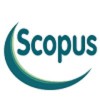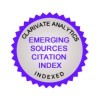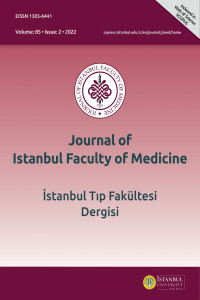Research Article
Aim & Scope
Journal of İstanbul Faculty of Medicine (J Ist Faculty Med) is an international, open access, peer-reviewed and scientific publication of İstanbul University, İstanbul Faculty of Medicine. It is published quarterly on January, April, July and October. Starting from March 2021, except for the articles in process, the journal has started to consider manuscripts in English for evaluation and publication language has become English. Before March 2021 the publication languages of the journal were English and Turkish.
Journal of İstanbul Faculty of Medicine (J Ist Faculty Med) aims to contribute to the literature by publishing manuscripts at the highest scientific level on all fields of medicine.
The journal publishes original experimental and clinical research articles, reports of rare cases, invited reviews that contain sufficient amount of source data conveying the experiences of experts in a particular field, and letters to the editors as well as brief reports on a recently established method or technique or preliminary results of original studies related to all disciplines of medicine from all countries.
The journal’s target audience includes researchers, physicians and academicians who are interested or working in all medical disciplines.
Author Guidelines
Manuscript Preparation
The manuscripts should be prepared in accordance with ICMJE-Recommendations for the Conduct, Reporting, Editing, and Publication of Scholarly Work in Medical Journals (updated in December 2015 - http://www.icmje.org/icmje-recommendations.pdf). Authors are required to prepare manuscripts in accordance with the CONSORT guidelines for randomized research studies, STROBE guidelines for observational original research studies, STARD guidelines for studies on diagnostic accuracy, PRISMA guidelines for systematic reviews and meta-analysis, ARRIVE guidelines for experimental animal studies, and TREND guidelines for non-randomized public behavior.
Manuscripts submitted to the journal will first go through a technical evaluation process where the editorial office staff will ensure that the manuscript has been prepared and submitted in accordance with the journal’s guidelines. Submissions that do not conform to the journal’s guidelines will be returned to the submitting author with technical correction requests.
Authors are required to submit the following:
• Copyright Transfer Form,
• Author Form and ICMJE Potential Conflict of Interest Disclosure Form (should be filled in by all contributing authors) during the initial submission. These forms are available for download at http://jmed.istanbul.edu.tr/en/content/manuscript-submission-guide/manuscript-submission-guide
Title page: A separate title page should be submitted with all submissions and this page should include:
• The full title of the manuscript as well as a short title (running head) of no more than 50 characters,
• Name(s), affiliations, highest academic degree(s) and ORCID ID(s) of the author(s),
• Grant information and detailed information on the other sources of support,
• Name, address, telephone (including the mobile phone number) and fax numbers, and email address of the corresponding author,
• Acknowledgment of the individuals who contributed to the preparation of the manuscript but who do not fulfil the authorship criteria.
Abstract: A Turkish and an English abstract should be submitted with all submissions except for Letters to the Editor. Submitting a Turkish abstract is not compulsory for international authors. The abstract of Original Articles should be structured with subheadings (Objective, Materials and Methods, Results, and Conclusion). Abstracts of Case Reports and Reviews should be unstructured. Please check Table 1 below for word count specifications.
Keywords: Each submission must be accompanied by a minimum of three to a maximum of six keywords for subject indexing at the end of the abstract. The keywords should be listed in full without abbreviations. The keywords should be selected from the National Library of Medicine, Medical Subject Headings database (http://www.nlm.nih.gov/mesh/MBrowser.html).
Manuscript Types
Original Articles: This is the most important type of article since it provides new information based on original research. The main text of original articles should be structured with Introduction, Material and Method, Results, Discussion, and Conclusion subheadings. Please check Table 1 for the limitations for Original Articles.
Statistical analysis to support conclusions is usually necessary. Statistical analyses must be conducted in accordance with international statistical reporting standards (Altman DG, Gore SM, Gardner MJ, Pocock SJ. Statistical guidelines for contributors to medical journals. Br Med J 1983: 7; 1489-93). Information on statistical analyses should be provided with a separate subheading under the Materials and Methods section and the statistical software that was used during the process must be specified.
Units should be prepared in accordance with the International System of Units (SI).
Editorial Comments: Editorial comments aim to provide a brief critical commentary by reviewers with expertise or with high reputation in the topic of the research article published in the journal. Authors are selected and invited by the journal to provide such comments. Abstract, Keywords, and Tables, Figures, Images, and other media are not included.
Invited Review Articles: Reviews prepared by authors who have extensive knowledge on a particular field and whose scientific background has been translated into a high volume of publications with a high citation potential are welcomed. These authors may even be invited by the journal. Reviews should describe, discuss, and evaluate the current level of knowledge of a topic in clinical practice and should guide future studies. The main text should contain Introduction, Clinical and Research Consequences, and Conclusion sections. Please check Table 1 for the limitations for Review Articles.
Case Reports: There is limited space for case reports in the journal and reports on rare cases or conditions that constitute challenges in diagnosis and treatment, those offering new therapies or revealing knowledge not included in the literature, and interesting and educative case reports are accepted for publication. The text should include Introduction, Case Presentation, Discussion, and Conclusion subheadings. Please check Table 1 for the limitations for Case Reports.
Letters to the Editor: This type of manuscript discusses important parts, overlooked aspects, or lacking parts of a previously published article. Articles on subjects within the scope of the journal that might attract the readers’ attention, particularly educative cases, may also be submitted in the form of a “Letter to the Editor.” Readers can also present their comments on the published manuscripts in the form of a “Letter to the Editor.” Abstract, Keywords, and Tables, Figures, Images, and other media should not be included. The text should be unstructured. The manuscript that is being commented on must be properly cited within this manuscript.
Table 1. Limitations for each manuscript type
Type of manuscript Word limit Abstract word limit Reference limit Table limit Figure limit
Original Article 3500 250 (Structured) 50 6 7 or total of 15 images
Invited Review Article 5000 250 50 6 10 or total of 20 images
Case Report 1000 200 15 No tables 10 or total of 20 images
Technical Note 1500 No abstract 15 No tables 10 or total of 20 images
Letter to the Editor 500 No abstract 5 1 1
Tables
Tables should be included in the main document, presented after the reference list, and they should be numbered consecutively in the order they are referred to within the main text. A descriptive title must be placed above the tables. Abbreviations used in the tables should be defined below the tables by footnotes (even if they are defined within the main text). Tables should be created using the “insert table” command of the word processing software and they should be arranged clearly to provide easy reading. Data presented in the tables should not be a repetition of the data presented within the main text but should be supporting the main text.
Figures and Figure Legends
Figures, graphics, and photographs should be submitted as separate files (in TIFF or JPEG format) through the submission system. The files should not be embedded in a Word document or the main document. When there are figure subunits, the subunits should not be merged to form a single image. Each subunit should be submitted separately through the submission system. Images should not be labeled (a, b, c, etc.) to indicate figure subunits. Thick and thin arrows, arrowheads, stars, asterisks, and similar marks can be used on the images to support figure legends. Like the rest of the submission, the figures too should be blind. Any information within the images that may indicate an individual or institution should be blinded. The minimum resolution of each submitted figure should be 300 DPI. To prevent delays in the evaluation process, all submitted figures should be clear in resolution and large in size (minimum dimensions: 100 × 100 mm). Figure legends should be listed at the end of the main document.
All acronyms and abbreviations used in the manuscript should be defined at first use, both in the abstract and in the main text. The abbreviation should be provided in parentheses following the definition.
When a drug, product, hardware, or software program is mentioned within the main text, product information, including the name of the product, the producer of the product, and city and the country of the company (including the state if in USA), should be provided in parentheses in the following format: “Discovery St PET/CT scanner (General Electric, Milwaukee, WI, USA)”
All references, tables, and figures should be referred to within the main text, and they should be numbered consecutively in the order they are referred to within the main text.
Limitations, drawbacks, and the shortcomings of original articles should be mentioned in the Discussion section before the conclusion paragraph.
Revisions
When submitting a revised version of a paper, the author must submit a detailed “Response to the reviewers” that states point by point how each issue raised by the reviewers has been covered and where it can be found (each reviewer’s comment, followed by the author’s reply and line numbers where the changes have been made) as well as an annotated copy of the main document. Revised manuscripts must be submitted within 30 days from the date of the decision letter. If the revised version of the manuscript is not submitted within the allocated time, the revision option may be canceled. If the submitting author(s) believe that additional time is required, they should request this extension before the initial 30-day period is over.
Accepted manuscripts are copy-edited for grammar, punctuation, and format. Once the publication process of a manuscript is completed, it is published online on the journal’s webpage as an ahead-of-print publication before it is included in its scheduled issue. A PDF proof of the accepted manuscript is sent to the corresponding author and their publication approval is requested within 2 days of their receipt of the proof.
Ethical Principles and Publication Policy
Ethics Committee Approval and Informed Consent
Journal of Child takes as principle to comply with the ethical standards of World Medical Association (WMA) Declaration of Helsinki – Ethical Principles for Medical Research Involving Human Subjects revised in 2003 and WMA Statement on Animal Use in Biomedical Research revised in 2016.
An approval of research protocols by the Ethics Committee in accordance with international standards mentioned above is required for experimental, clinical, and drug studies and for some case reports. If required, ethics committee reports or an equivalent official document will be requested from the authors. For manuscripts concerning experimental research on humans, a statement should be included that shows that written informed consent of patients and volunteers was obtained following a detailed explanation of the procedures that they may undergo. For studies carried out on animals, the measures taken to prevent pain and suffering of the animals should be stated clearly. Information on patient consent, the name of the ethics committee, and the ethics committee approval number should also be stated in the Materials and Methods section of the manuscript. It is the authors’ responsibility to carefully protect the patients’ anonymity. For photographs that may reveal the identity of the patients, signed releases of the patient or of their legal representative should be enclosed.
Price Policy
All expenses of the journal are covered by the Istanbul University. Processing and publication are free of charge with the journal. There is no article processing charges or submission fees for any submitted or accepted articles.
Indexes
Citation Indexes
Other Indexes
Journal Boards
Editor in Chief
Co-Editor in Chief
Section Editor


Prof. Dr., Halk sağlığı Uzmanı. 1987 yılından beri İstanbul Tıp fakültesinde çalışmaktadır




Ali Fuat Kaan Gök, M.D., F.A.C.S, is an Associate Professor in the Department of General Surgery at Istanbul University Faculty of Medicine (Çapa). He specializes in trauma and emergency surgery, laparoscopic procedures, hepatobiliary surgery, advanced endoscopic interventions, and gastrointestinal cancer surgery. Dr. Gök graduated from Istanbul University Faculty of Medicine (2001), completed his residency in General Surgery (2008), and has over 23 years of surgical experience. He has authored more than 175 scientific works, including over 50 articles published in journals indexed in the Web of Science (WoS), as well as national book chapters and papers presented at national and international congresses. His work has received more than 380 citations in Scopus and over 310 citations in WoS, with an H-index of 10 (WoS). Dr. Gök currently serves as the Vice President of the Turkish Association for Trauma and Emergency Surgery and as Turkey's National Delegate in the Advisory Council of the European Society for Trauma and Emergency Surgery (ESTES). He is also actively involved in professional associations such as the American College of Surgeons and the Turkish Surgical Association.

Statistical Editor

Publicity Editor

Editorial Assistant

Contact information and address
Addressi: İ.Ü. İstanbul Tıp Fakültesi Dekanlığı, Turgut Özal Cad. 34093 Çapa, Fatih, İstanbul, TÜRKİYE
Email: itfdergisi@istanbul.edu.tr
Phone: +90 212 414 21 61












